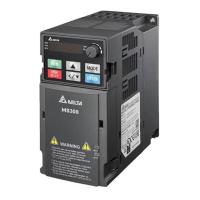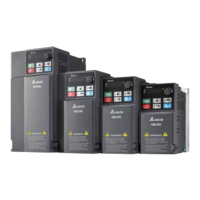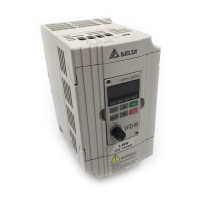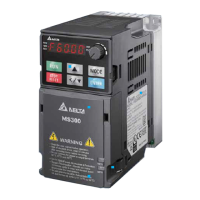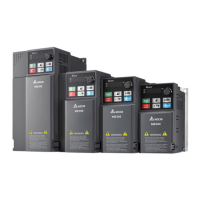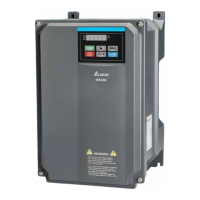Chapter 16 PLC Function ApplicationsMH300
Digital keypad (KPMH-LC01)
Figure 16-6
Enter PLC mode setting, and select PLC1
PLC 0: Do not implement PLC functions
PLC 1: Initiate PLC Run
PLC 2: Initiate PLC Stop
The MH300 automatically switches to PLC mode when the external multifunctional input
terminals (MI1–MI7) are in PLC Mode selection bit 0 (51) or PLC Mode selection bit1 (52),
and the terminal contact is closed or open. In this case, keypad switching is ineffective. The
corresponding actions are listed in the following table.
PLC Mode selection
bit1 (52)
PLC Mode selection
bit0 (51)
Using KPC-CC01
Using KPMH-LC01
Table 16-2
Using the MH300 digital keypad to implement the PLC functions
When the PLC screen switches to the PLC1 screen, this triggers one PLC action, and
you control the PLC program start/stop by communications with WPLSoft.
When the PLC screen switches to the PLC2 screen, this triggers one PLC stop, and
you control the PLC program start/stop by communications with WPLSoft.
The external terminal control method is the same as shown in Table 16-2 above.
NOTE:
When the input / output terminals (MI1–MI7 Relay MO) are included in the PLC program,
these input / output terminals are used only by the PLC. For example, when the PLC
program controls Y0 during PLC operation (PLC1 or PLC2), the corresponding output
terminal relay (RA / RB / RC) operates according to the program. At this time, the
multifunctional input / output terminal setting has no effect. Because these terminal
functions are already being used by the PLC, you can determine the DI / DO / AO in use
by the PLC by looking at Pr.02-52, 02-53, and 03-30.
When the PLC’s procedures use special register D1040, the corresponding AO contact
AFM is occupied.
Pr.03-30 monitors the state of action of the PLC function analog output terminals; bit 1
corresponds to the AFM action state.
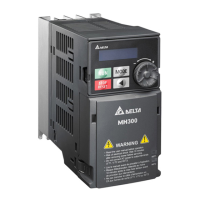
